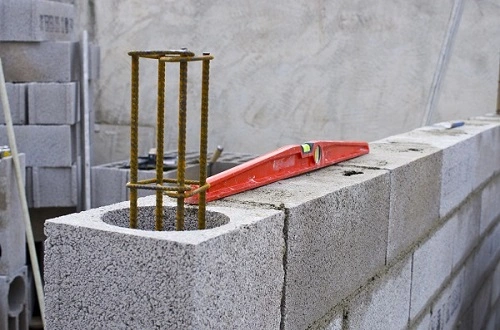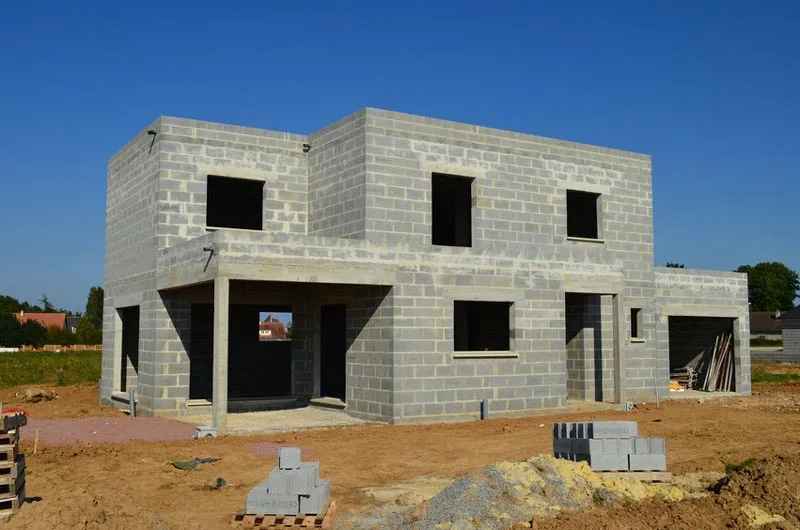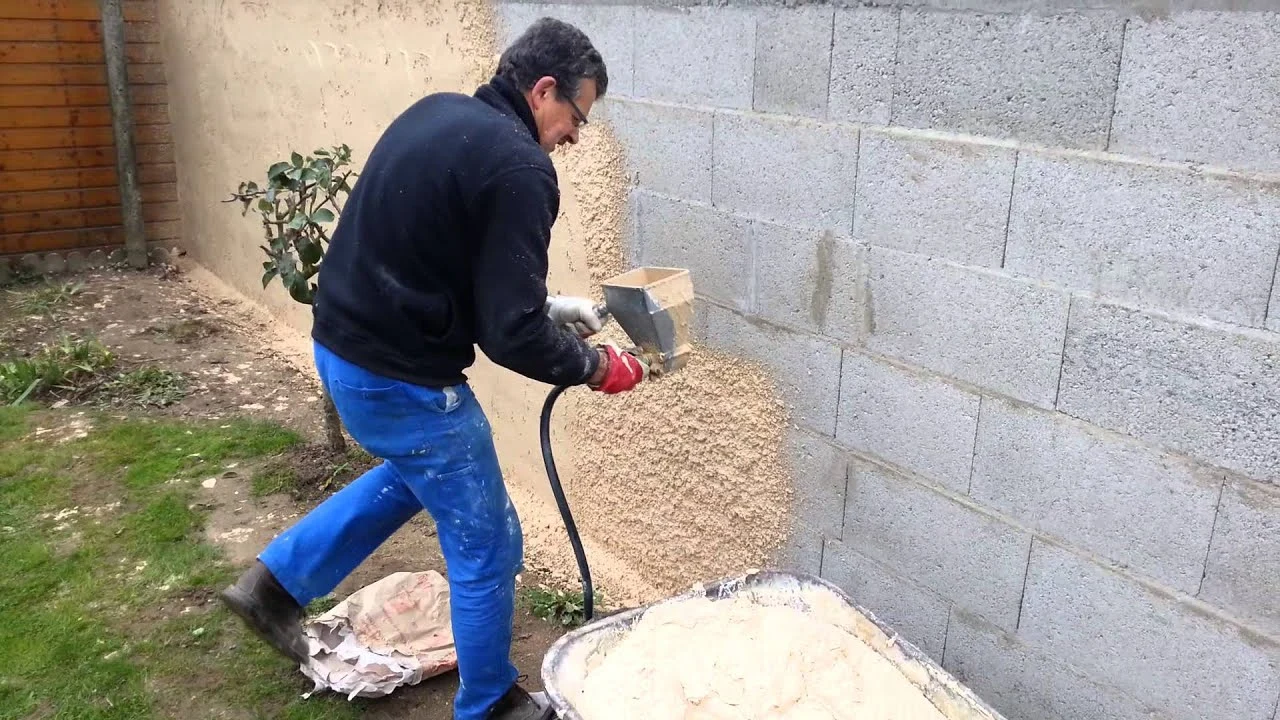Always amses me to see you guys build your wood houses. This looks so much like a construction game for children, I want to play too!
I live on a fault line along the pacific ring of fire, and so building with wood was an absolute necessity for us so long, as they were structurally more lenient to the constant earthquakes. Even now I believe our old government building is the largest wooden building in the Southern hemisphere (and it’s only 4 stories tall). These days as construction techniques have changed, we’ve obviously built things with concrete, steel, brick, etc., but the wooden tradition remains strong, with a huge majority of modern houses here still being built like this.
That aside, wood was also just a much cheaper material to build with, so it was the most economical material to use for a long time for much of the “new world”.
Right. Buildings were mostly wood and mud in Europe until the 18th Century. By then, cities became so dense that big fires were extremely deadly. Little by little people started building in stone, then bricks and now reinforced concrete.
It didn’t really have anything to do with fires. Pretty much every hardwood forest was cut down in Europe and any remaining were protected so they could be used to build ships.
America was colonized late enough that it never really became an issue.
Yeah exactly they basically stripped their continent bare of lumber during that period and it’s all at the bottom of the ocean now. The materials used are just as much determined by economic conditions as practicality.
you guys build your wood houses
What do you normally build houses with?
Here in Europe, we use mostly cinder blocks or bricks. I guess wood is more common in Northern Europe and Switzerland
In California we use wood because it flexes during earthquakes. There may be damage during a big one but at least the house is less likely to collapse on you.
In earthquakes in NZ the wooden houses flex for sure. What kills you is the brick chimney falling through the roof.
deleted by creator
deleted by creator
isnt brick an excellent insulator?
deleted by creator
deleted by creator
i was so sure it was, i looked it up after seeing your comment and… you are right. even double brick which ive always been told was great, apparently isnt all that good. TIL
In Europe we use reinforced concrete for the same purpose. Don’t know if it works but it’s the way it’s done.
Wait, are earthquakes common in Europe?!
Italy ils pretty shaky, Portugal too. Southern France is waiting for its own Big One.
For reference, nowhere in Western Europe is even close to the much of the west coast of the Americas in terms of seismic activity.
And also because there’s no snow or serious rain. Took me years to get used to the flimsy houses here, they wouldn’t last a year back in my country.
I don’t know about that. I’ve lived in a typical “flimsy” American wooden house in an area that had a lot of crazy weather with extreme winds and even a couple of tropical storms. That house had absolutely no issue with those. These houses are a lot stronger than they look. They flex but don’t break.
My house is 80 years old, I’ve personally seen 3 feet of snow on its roof, it weathered hurricane Fran with no damage, hurricane Matthew caused a leak around the chimney that stained my living room ceiling a little.
I’m ready to take anything this area is willing to throw at me except tornadoes. A direct strike by tornado will pull it down.
I live in the Pacific Northwest where it rains quite a bit. Wood houses are fine in the rain as long as the moisture barrier and roof have been installed correctly.
Canada also builds houses out of wood. There’s pretty serious snow here and the houses work great.
I also live in one of the the windiest cities in Canada . The asphalt shingles have blown off houses frequently, but the houses themselves are solid.
I’m pretty sure those wooden houses in Canada are built differently from wooden houses in California. The ones I’ve seen are thin wooden struts covered with some drywall.
Edit: and just saying “flimsy” by comparison to the usual reinforced concrete structures back home. I now own a home in California and it’s definitely solid.
So funnily enough, 2x4 exterior walls meet code for 3 stories, but where I am, it doesn’t meet the insulation requirements of minimum r-20, so it’s normally built with 2x6.
deleted by creator
I know it is possible to build solid houses out of wood. The ones I’m talking about would 100% not withstand blizzards or tornadoes.
Like most in my native country, I grew up in a building made entirely of solid reinforced concrete slabs, including most interior walls. I could not hear my upstairs or downstairs neighbors and when I saw people punching holes in the walls in American movies I thought it’s just an exaggeration, not something that can actually happen. Wooden houses were culturally associated with poor rural people who couldn’t afford living in a nice solid apartment. That culture persists today, and even in isolated villages new homes are built with concrete structures and brick walls.
When I bought a piece of land and was looking at options for new houses, I found a company making very solid wooden homes (still a lot more solid than the average Bay Area home) for reasonable prices and both my and my wife’s families were outraged at the idea of building a house out of wood.
Just some random background to why I’d use the word “flimsy” for wooden struts sandwiched between drywall sheets.
If we did that in the US west coast, they would crack and fall apart from tectonic plate shift. You need to build things to be flexible for earthquakes and general shift.
I live in a 100 year old farm house in California and every spring and fall we have to move the strike plate (thing the door latch nubbin goes into) on the front door up or down about 3/4 inch due to seasonal house shifting. The door stops closing and we know it’s spring time!
Steel reinforcement is what keeps them up. At least it’s supposed to.

The structure would still be damaged, although it may be “standing”.
It doesn’t work, it’s been tested plenty by people far smarter than either of us.
It would stick crack and crumble around the steel. It wouldn’t work here, which is why it against building codes here.
That’s a really poor argument to pass down to people.
Solutions exist to make buildings earthquake resilient and the USA created a good part of it.
Vibration dampeners, structure stress relievers, special mortars and concretes, specific structural geometry, etc.
There is no reason why the US should keep its attachment to wood construction. Tornado alley would vastly improve if house were to shift from match sticks and hope to brick and mortar with reinforced concrete foundations.
Tornado alley is a completely different part of the US than the West Coast, which is specifically what I was talking about. It’s like 2000 miles away. Tornado alley doesn’t have earthquakes, so this discussion doesn’t even apply to that. Bust now that were talking about it, in tornado alley, houses at least do have a brick exterior around the wood.
I picked Tornado Alley because it’s low hanging fruit; I’ll get to that again.
USA has a fixation for wood construction, completely unreasonable and unjustifiable. There are several countries and regions in the world with sysmic activity that do not opt to build in wood.
Japan sits atop a zone of tectonic plate subduction. Hearthquakes are not unknown to them and they build with modern materials. Tokyo, with its extreme population density, is built to withstand earthquakes and hurricanes. Are the USA dumber than Japan?
Regarding Hurricane Alley, wrapping a woodframe with brick doesn’t make the structure sturdier, just makes it heavier and more prone to break under stress, as the brick work won’t have structural role.
A properly built modern brick or block structure has a super structure reinforced with rebar and concrete, which then receives the brick/block work to finish the building, with some walls being part of the superstructure of the building. This forms a monolithic construction that tends to be very stuborn and stays in place unless something blows it to pieces. Older buildings used other techniques, usually tied to the brickwork itself to create load bearing structures.
That’s because Europe has had many more centuries worth of deforestation. The greatest resource the Americas had to offer to Europe was essentially unlimited lumber.
And we wasted a lot of our forests on superfluous things like war ships - see the Castillan plateau which is now a dry and barren land.
Why aren’t they replanting?
Once you’ve destroyed an ecosystem, it takes a lot of effort to bring back. Often you can’t just expect to plant the same type of trees as before and expect it to take.
There are ways to introduce things gradually, but it’s not an on/off switch.
Plus there are entire keystone species of trees that blights drove to actual or morphological extinction. I don’t know about European species, but the mountains of appalachia used to be covered in massive American Chestnut trees that were so big around at the trunk they were on par with west coast species. After the blight, you can still find groves of chestnut trees, but its like they’re a different species - they live 7-9 years and die basically around the time they first mast. They never live long enough to really leave the sapling phase.
Maybe they are. It’s a long way though
In Florida houses are also built from cinder blocks because wood is too weak against hurricanes.
Edit: interiors can be built from wood, but all exterior walls are made with cinder blocks.
So that people can remain secure like the third little pig!
Exteriors are wood too, hurricane straps. Basically metal connectors connect everything from ground across the roof to the ground again.
What part of Florida? I know there’s different wind speed ratings depending on how far north you’re building. In South Florida I only ever saw cinder block or full concrete exteriors.
It should be compliant everywhere, maybe a particular municipality has specific restrictions though.
Same in the Caribbean. Houses and buildings made of concrete to survive hurricanes. Windows may blow out but the walls stay firm.
Interesting. Here in California, building brick structures is prohibited because of the risk during earthquakes.
I’m actually living in California now. Very different structures to the buildings. Houses are much smaller overall too. But the landscape is so much nicer to look at and explore. I never realized how boring and flat Florida was until I left.
We have plenty of brick houses here too, but they all are still built around wooden frames for the most part
Wood is becoming popular for new constructions in France too.
With the new regulations you need to limit the amount of CO2 emitted for building and maintaining the house.
It’s much easier to respect this regulation by using wood rather than concrete so we see more and more wooden constructions now.
deleted by creator
something like this for example
With clay bricks! That’s a fa’cy one
That’s most likely Porotherm bricks, which are cheaper. And the even cheaper version is with AAC bricks like this
Or this

That appears to be a military bunker of some sort
It does, doesn’t it? That’s before surfacing is done.

I’m pretty sure you’re supposed to be in a full suit with a respirator, mask and whatnot to spray this shit.
I was thinking more like a commercial building than a residential.
In Europe? Bricks and mortar
I understand a lot of homes in Europe are not well insulated, and weren’t built with it in mind. Climate change is causing problems with this design deficit.
That is mainly specifically a UK problem. Most homes in Europe are pretty decently to excellently insulated.
deleted by creator
It’s not like it’s a “wood house” though just the framing is softwood lumber. The foundation is reinforced poured concrete, there’s steel support braces, the ties and hardware are likely zinc coated steel, roof is asphalt shingles or steel, wind bracing is lumber or steel rods depending on code, could even have exterior brick or vinyl siding.
Wouldn’t the inside of your house still have wood framing structure like this though? Looks like this neighbourhood uses vinyl siding, but you could easily have a brick/stone/stucco exterior.
Isn’t it way harder to run plumbing/electric through cinder blocks, let alone hanging drywall? Or do you build a cinderblock box first and then frame the inside with wood?
This place looks like it doesn’t have a basement, which is a must in Canada, and all our basements are generally concrete pour or cinderblocks, but we still have framing on the inside walls, and usually everything above the basement is wood + facade
Portugal here, no wood, just iron, steel and concrete. And bricks, of course.
Where I am in South Carolina very few people have basements as they would be prone to flooding
Interestingly enough, I was contemplating the amount of sand used in cinder blocks vs tabby.
Isn’t it way harder to run plumbing/electric through cinder blocks, let alone hanging drywall? Or do you build a cinderblock box first and then frame the inside with wood?
At least in South America (where most buildings are made of brick and mortar) there’s no drywall. The internal finish is a smooth layer on top of the bricks and that’s it. That makes it easier to hang heavy things on the wall but also makes it impossible to run wires of any kind. It also makes repairs more difficult.
Our schools in North America are mostly built like this. I think the bricks are hollow, so they can run power, but most things reside inside the drop ceiling.
Wouldn’t the inside of your house still have wood framing structure like this though?Extremely rare. Most houses built until the 1959s are made of stone and mortar, with walls at least 2 feet wide. In Northern Europe, i.e. UK, Belgium, Netherlands, parts of France and Germany, you would fund brick and mortar walls. Interior walls were built with thin hollow bricks assembled with mortar. These houses are a pain to renovate and most people just put everything agaisntbthe existing walls and then glue their drywalls on top of it with adhesive mortar. Since then, it is mostly cinder blocks or hollow brichs that are then filled with concrete. Modern building regulations impose steel reinforcement in regions prone to earthquakes. Interior walls are built with a framing of steel railings that are very light and flexible when handled but very sturdy when assembled. The drywall is screwed on each side of these rails which gives room for electrical and plumbung.Typically, yes. In the US at least, cinder block houses are common particularly in Florida and coastal regions. The inside would still likely have a moisture barrier and insulation on modern homes, so you will typically have wood framing for interior walls to allow for wiring, plumbing, and insulation that is then drywalled over.
I’m genuinely curious. I am in the southern US, Alabama specifically with the heat and humidity that entails. There are cinder block homes here, but they’re mostly looked down upon and almost always have mold and mildew problems. How is that handled with brick and mortar or concrete construction?
Double walls, with thermal insulation, external vapor barrier and built in ventilation ducts. Special additives for the mortars prevent moisture from seeping into the walls. Double or even triple pane windows and good quality, properly applied exterior paint reinforces the insulation.
Most of the ones I’ve seen don’t have most of, or any of this. I’d suspect that’s the problem.
I’ll risk the ones you’re used to see are single wall, probably bare block and perhaps poorly cobbled together, as if they were sheds or something alike.
Far off the mark?
Not too far off of it.
I don’t see why brick and mortar houses should be extra susceptible to those problems if build well. But of course Europe didn’t use to see the same extremes of heat and humidity as the US does, perhaps it will become a problem in the future.
You got it right I suspect. Most of these that I’ve seen are a single course of blocks with no discernible vapor barrier or anything. And maybe a thin layer of paint.
Brick manufacturing devastates the environment. We build our houses from sustainable resources.because we’re not cavemen.
We build our houses from trees because we have lots of trees.
Meanwhile most of your energy sources are not renewable and per capita the average emissions of the American is double or even triple of the average European.
Why the aggressive tone? Each technique has its advantages. I guess brick and mortar houses would burn less in California, which has the same climate as Italy and Spain
Whether or not the house burns to the ground is irrelevant when the damage caused by the heat alone would condemn a brick/stone house in the US. At least wood frame houses can be easily tore down and rebuilt.
~
At least wood frame houses can be easily tore down and rebuilt~.Fair point
That is not the reasoning at all.
Places generally build with whatever sensical building material they have most widely available. If there are a ton of forests, they probably build with wood. If there’s a ton of stone, they probably build with stone.
You’re wrong, and honestly kind of a dick.
Remember when we had enough room to build a house?
“I want a house.”
“We can squeeze one in here.”
“Oh…”
“For $800K.”
“Ooh…”
“You don’t want it? There’s a line.”
“Okay…” 😔
deleted by creator
ikr. You don’t have to build skyscrapers either. Just build 3, 4 stories high. You can literally house 4 times the current capacity with arguably very little change in “look of the neighborhood”.
I don’t see floor trusses used too often so it’s neat to see them here
It’s used so the other trades don’t wreck all the TGIs by putting incorrect penetrations. It has all the holes they could possibly need, but sometimes they’ll stick cut a plate….
Holy shit this explains so much!
Our dishwasher in a 2010s era home finally died, and when we pulled it out to install a new one there were these off center holes behind it!
Like, wtf? Why did you need three holes for one cord?
I guess during construction different people thought it wise to drill different holes for different things?
deleted by creator
Laziness more or less.
It’s easier and cheaper to just run one wire. Most people don’t want more than a couple different port locations so why bother?
And you’re not installing the other two items so it’s not your responsibility. You’re also not going to get paid more for doing the extra work. Even if the homeowner was the one paying you, most aren’t willing to pay a bit extra just so it’s easier on the next guy.
This is interesting. I did my garage from the studs out. Using conduit to run electrical never even occurred to me. I think it would be a real bitch to drill holes through each stud level enough to push a rigid conduit through. Maybe there are some flexible conduits, but now you’re taking a 1/2" hole and making it a full inch, in a 2*4, which is nominally 1 and 3/4". But now I’m thinking they did it with Bx, and maybe I’m not fully versed on why. I know the shielding acted as a ground as well.
I’m rambling. I think there’s some rationale that’s not just capitalism=bad. Code is okay with running straight Romex through studs, so long as you staple and whatnot. Maybe it’d be above code to use conduit, but I think it’s just a lot of extra work for not very much payoff. So yeah, capitalism=bad, I guess.
deleted by creator
So during my garage retrofit, I did run, in addition to 100amps for a panel, a separate conduit with two Cat6s. In the event of upgrades in tech, I can easily pull that through and replace with Cat7 or whatever. I won’t, but I could. It’s about 90ft from the house to the garage.
The answer is capitalism. Doing things the best way and most profitably is not always the same.
How are floor trusses different from regular floors? What are TGIs and incorrect penetrations?
Thank you if you have time to answer.
There isn’t really any type of “regular” floor in wood, but the 3 most common are dimensional lumber (2x10s for example), engineered joists (TJIs which are dimensional top and bottom chord and OSB web) and engineered trusses (what you see here, dimensional chords and webs.
I apologize for that typo, it’s TGI I-Joists, explained above briefly. The incorrect penetrations can happen in either dimensional joists or engineered joists. The easy rule of thumb is no more than 1/3 the diameter of the material (9” joist being 3” max) and has to be in the inner 1/3 (9” again so no holes within 3” of the top or bottom of the joist.
Now most engineered joists come with pre penetrations and any deviation without their express consent can void their warranty, BUT following general guidelines shouldn’t lead to any issues.
I’m seeing them more and more, which means OSB is probably too expensive to use for engineered trusses now.
It’s a trade off, more expensive, but you’re not replacing them because some trade made an incorrect penetration.
Basically you’re paying more to prevent issues later.
Ok… and?
And I took a picture of it.
I like the picture. I like how the wood pops against the clouds. And the green of the tree. It is perfect for a sub(Lemmy) dedicated to pics, which I believe to be short for pictures, but don’t quote me on that.
We call them “communities” here, subs is reddit.
This looks like the US. For someone from outside the US, this might be very interesting, because it’s very different than what you might see in other countries, especially in Europe, where everything is brick and mortar inside and out.
Hmm, must be different from region to region within Europe. Wood is a popular building material in Finland, at least.
Yes, there are areas of Europe where wood is the main building material, like in Finland and Norway, because wood is so abundant. Same in northern Sweden. In southern Sweden, it’s mostly brick and mortar.
deleted by creator
Because they are. Cheap flimsy cardboard buildings
Odd, never knew that homes in europe were built the way they are. Just did some reading about it and it’s vastly different to here in Australia where we do it like this photo - concrete slab then build a frame of the house from wood/steel, do all the plumbing/wiring/etc, then either brick or wood around the frame.
I’m currently in a neighborhood that was empty farmland as far as they eye could see just 5 years ago. I had never seen a building being built before, but now I drive past 4 complexes being built just on my way to the grocery store. They’re also building a closer grocery store.
This area is going to be so nice in like 5 years, but right now it’s an absolute mess of construction, road widenings, putting utilities in the ground, etc. We didn’t even have cell access here when I moved in 9 months ago.
I had never seen a building being built before
Must have been nice
ITT: Bricks good, wood bad. Nobody with a clue about thermal bridging and energy efficiency to be found.
Or how frames work
This looks like the perfect Lemmy post.
A bunch of people who know fuck-all about the subject matter at hand (in this case construction), and then sprinkle in the usual anti-American bias that flavors a large number of posts on this site. The only thing missing seems to be something dealing with Linux or some pro-commie spin.
At least they’re using an open framework. I hope the plans are GPL compatible.
Those 2x4s don’t look open source to me. Must be some proprietary M$ stuff.
Don’t forget all the top comments criticizing other comments!
Everyone in the comments is suddenly a construction and climate expert.
I just thought it looked cool lol
I always wondered why american houses are destroyed so easily in storms
I now have my answer
So what would you build a house out that can take 400 kph debris storm
I would leave it to the experts knowledgeable in the field to help engineer and design a house like that and let them manage the building
Yeah that what they would pick that kind of house.
Yea it takes a few decades to get this far
Tell me you know nothing about construction without telling me you know nothing about construction.
The problem is that I’ve seen videos from after storms from the us and the houses are easily destroyed compared to other countries
Videos from other countries that I’ve seen (excluding countries with bad building standards like china) have buildings that have stood up better to or completely survived storms
You don’t know what you are talking about.
No other place on earth has more tornadoes (over 200 MPH/320 KPH air speeds) than the US.
Europe gets about 200 to 300 a year.
The US gets about 1200.
Europe gets about 2 hurricanes each year (wind speeds of about 130 MPH/210 KPH).
The US gets about 12 each year.
If you think any regular home structure can survive a direct 200 MPH hit, you are delirious. And for most other storms, having a structure that has some level of flexibility is far superior to some brittle structure made of brick or concrete that doesn’t flex. That wood structure will take a hit and bounce back, while brick, clay or concrete will crack and collapse. Neither is a great situation, but we also have vast forests to cut down for lumber, while Europe, not so much.
They’re building it right in front of those other people’s windows. Fuck these people.
The people in the old house had windows that had a bonus view for a while. Now the property’s being developed and their bonus view just becomes a wall. If they wanted to maintain line of sight they should have purchased this property next to theirs.
It’d be a crazy world where you can’t build on your property because you would block the window of somebody else’s property
It looks like it’s being built in front of their house, not next to it, but I guess this is a corner lot? If it’s next to it then that’s normal.
Do local govts/authorities not block people from blocking others’ windows?
Around here you have to be a certain distance away from other windows, have your roof at a particular angle to make sure sunlight still reaches and a bunch of other stuff prior to approval… and even then neighbors are still free to block construction if it’s impacting their light
Oversized garden shed by the looks of it.
It just looks like a regular house to me. Your garden shed has two floors?
My oversized garden shed has two floors, yes. I have to admit that the other sheds on my premises are a bit smaller.
I believe a two story “garden shed” would technically be a barn
And yet, that’s someone’s home that they are proud to have, I’ll bet.
South Carolina is fucking crowded bruh, this is a nice sized house for what we’re dealing with.
But hell, at the rate we’re going even this is probably too big to be sustainable.
Where do you live that everyone’s getting castles or mansions, so I can move there?
Yeah, I’m from Jersey and I’m saying hey, this is a nice home, looks like a nice neighborhood. And a modest yard. I dig it. I think having a small yard is a-ok.
From what I have seen america is designed to be crowded, you have so much land (some of it stolen) yet you choose to crowd yourselves in so tightly
Yes, it’s true, people like to live together and where all the action is. There is indeed plenty of land left, but that’s pretty much all it is for now and not many people want to live somewhere they don’t even have a proper grocery store.
















